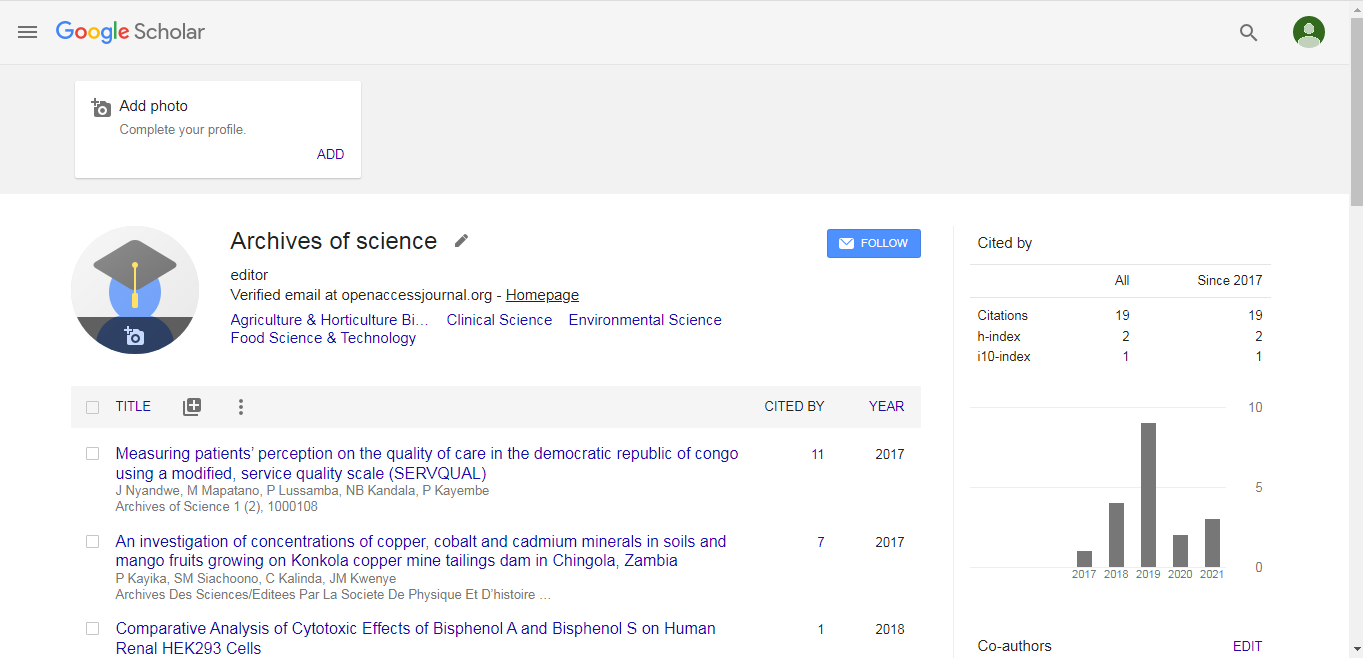Biomaterials 2019: New approaches to simulation of enzymatic reactions: Mimetic catalysis - Tofik M Nagiev - Nagiev Institute of Catalysis and Inorganic Chemistry
*Corresponding Author:
Copyright: © 2020 . This is an open-access article distributed under the terms of the Creative Commons Attribution License, which permits unrestricted use, distribution, and reproduction in any medium, provided the original author and source are credited.
Abstract
The area between enzymatic and chemical catalysis, associated with simulation of biochemical processes by their basic parameters, is accepted as mimetic catalysis. The key aspect of mimetic catalyst is diversity of enzyme and biomimetic function processes, which principally distinguishes the mimetic model from traditional full simulation. Basing on the analysis of conformities and diversities of enzymatic and chemical catalysis the general aspects of mimetic catalysis are discussed. Idealized model of biomimetic catalyst and the exclusive role of the membrane in its structural organization are considered. The most important achievements in the branch of catalysis are shown, in particular, new approaches to synthesis and study of biomimetic catalase, peroxidase and monoxides reactions. The catalysis direction, originated from simulation of biochemical processes, is suggested to call the mimetic catalysis. Mimetic catalysis designs a real model (a mimic) which simulates objects and processes of enzymatic catalysis by their basic (but deficient) characteristics (selectivity, condition mildness, active site action mechanism etc.). Since only definite properties of enzyme are simulated, it does not pretend to completeness of enzyme description, though optimal parameters by some properties may be approached. The mimetic model of enzyme helps in synthesizing suitable catalysts using inaccurate and sometimes ambiguous information. The overwhelming majority of biomimetics operate in liquid. Their activity depends on the origin of solvents, reaction mixture and cell effects. Gas phase oxidation processes are less dependent on these effects and in the first approximation can be considered as oxidation under quasi-ideal conditions. It goes without saying that enzymatic reactions do not proceed in gases. However, it is possible to simulate catalytic functions in the gas phase. However, it is possible to simulate catalytic functions in the gas phase. This simplifies the decoding of the reaction mechanism, not complicated by factors accompanying the liquid-phase oxidation.
The natural enzyme is a kind of biocatalyst that is closely related to many life activities (Arnold et al.). Similar to other catalysts, the presence of natural enzymes can greatly speed up the reaction and sometimes participate in the reaction, but the enzyme itself does not change before or after the reactions (Wilhelmová). In addition, it exhibits high catalytic efficiency, mild reaction conditions and high specificity (Sheldon). However, lots of natural enzymes are proteins, which are susceptible to high temperature, acidic or alkaline, causing loss of catalytic activity (Chang). In addition, natural enzymes
presented in living organisms are difficult to purify, relatively expensive, and not easily transported and stored (Scopes). To overcome the limitations of instability and high cost for natural enzymes, researchers are looking for different ways to prepare mimetic enzymes to replace natural enzymes (Chen et al.; Yang et al.). Until now, different types of mimic enzymes have been designed and used in many biological fields, such as immunoassay (Lequin), glucose detection (Song et al.), heavy metal ion detection (Kim et al.), free radical protection (Barzegar and Moosavi-Movahedi), and tissue engineering (Griffith and Naughton). Host-guest chemistry (Wan et al.) and supramolecular chemistry (Steed and Atwood) lay an important theoretical foundation for mimic enzyme. In essence, the basic meaning of host-guest chemistry comes from the interaction between enzyme and substrate, which is embodied in the complementary spatial and electronic arrangement of the binding site between the subject and the guest (SpichigerKeller). This host-guest complementarity is similar to the combination of the nanozymes and the substrate. Based on noncovalent bond interactions, such as electrostatic interactions, hydrogen bonding and van der Waals forces (Pasternack et al.; Wei and Wang), supramolecular are produced by the combination of substrate and receptor (Geim and Grigorieva). When receptors combine with complex ions or molecules, a supramolecular with stable structure and properties is formed, which has the functions of molecular recognition, catalytic and selective output. Host-guest chemistry and supramolecular chemistry are important theoretical weapons for the simulation of artificial enzymes.
At present, the ideal traditional enzyme systems include cyclodextrin (Del Valle), cyclophane (Gleiter and Hopf) and cyclic aromatic hydrocarbons (Tsipis and Tsipis). The chemical composition of traditional mimic peroxidase-like activation enzyme is non-protein, but these enzymes have similar catalytic performance to natural enzymes (Meeuwissen and Reek). These traditional mimetic enzymes are superior to natural enzymes in thermal stability and acid-base resistance, but their shortcomings, such as too-complex structure, difficulties in separation, single catalytic active sites, and low catalytic efficiency, still stunt their development progress.

